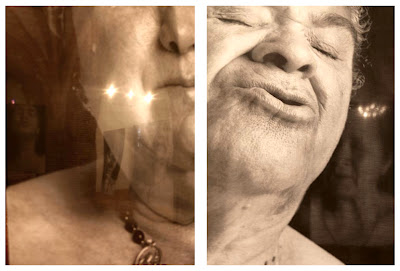SUDARIOS: Exhibition
Photographs (c) Erika Diettes
SUDARIOS: Exhibition
Photographs (c) Erika Diettes
SUDARIOS: Exhibition
Photographs (c) Erika Diettes
SUDARIOS: Exhibition
Photographs (c) Erika Diettes
"The rivers of Colombia are the world´s largest graveyard."
I first met Colombian photographer Erika Diettes several years ago when she was exhibiting her very moving project SILENCIOS. Silencios was an ambitious project Erika compiled of portraits and testimonials of the Jewish population in Colombia that had survived the concentration camps of Nazi Germany during World War II. Please read more and view photographs of Erika's human rights projects on her website.
Capilla de Los Remedios
Santo Domingo, República Dominicana
September 4 - 30, 2012
DRIFTING AWAY: Clothing of the Disappeared
Photographs (c) Erika Diettes
Photographs (c) Erika Diettes
Clothing of the Disappeared
Photographs (c) Erika Diettes
Photographs (c) Erika Diettes
In DRIFTING AWAY my intention is to draw attention to the victims of forced disappearances of the Colombian armed conflict. The project is a response to a number of press reports and news broadcasts which explain how the paramilitaries and the guerrillas torture people, mutilate them and make them disappear by throwing their bodies into a river. This is the source of the saying "the rivers of Colombia are the world´s largest graveyard".
To create an expression of this horrible situation, I decided to submerge pieces of clothing or personal objects of the victims in turbulent water, and then photograph them. I print these photographs on glass to convey the feeling of the ethereal and fragile character of life in those parts of our country.
These very large glass photographs are then displayed upright in the ground, like translucent tombstones in a cemetery. This way people can walk in and around them, and begin to experience the grief of loss. It has been very difficult for the families of the disappeared to feel the healing power of grief, especially since there is often no certainty whether one of the disappeared is actually dead or alive.
I started in Bogotá by looking for clothing or objects belonging to people who had disappeared. Then I continued my search in other areas of conflict, including Eastern Antioquia, Caquetá and Medellín, amongst other places.
During these macabre visits I was able to talk to the families of the victims, who are indeed the voice of all Colombia, clamouring not only for the respect for life, but also for the right to be able to bury their dead. — Erika Diettes
To create an expression of this horrible situation, I decided to submerge pieces of clothing or personal objects of the victims in turbulent water, and then photograph them. I print these photographs on glass to convey the feeling of the ethereal and fragile character of life in those parts of our country.
These very large glass photographs are then displayed upright in the ground, like translucent tombstones in a cemetery. This way people can walk in and around them, and begin to experience the grief of loss. It has been very difficult for the families of the disappeared to feel the healing power of grief, especially since there is often no certainty whether one of the disappeared is actually dead or alive.
I started in Bogotá by looking for clothing or objects belonging to people who had disappeared. Then I continued my search in other areas of conflict, including Eastern Antioquia, Caquetá and Medellín, amongst other places.
During these macabre visits I was able to talk to the families of the victims, who are indeed the voice of all Colombia, clamouring not only for the respect for life, but also for the right to be able to bury their dead. — Erika Diettes










No comments:
Post a Comment